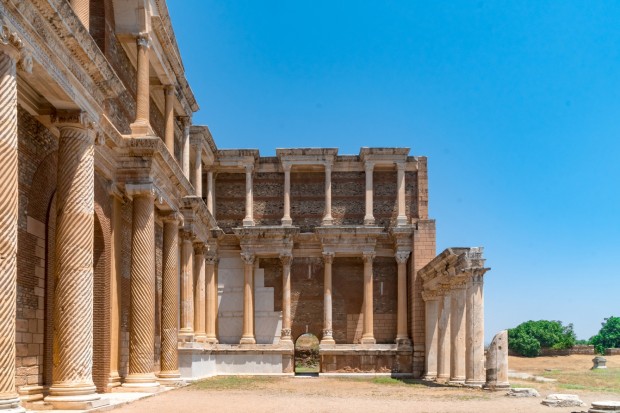
(Photo: Bigstock)
Sardis, once the bustling, mercantile capital of the ancient Lydian Empire, barely exists today. Nearly all of the city's architectural and cultural remains have been lost to history, overbuilt by dozens of post-Lydian settlements.
However, dedicated archaeologists have been able to pull some tantalizing clues about the region's history from the unyielding earth. These fragments reveal a civilization that was very much a product of its environment. Rory Brown, Managing Partner of Nicklaus Brown & Co., shares details about the ancient Lydian remains in Sardis.
Lydia's Cultural Identity
There are scant few Lydian documents that survive today, which is why historians rely on mentions of Lydia in the writings of nearby cultures. The Greek historian Herodotus was the most prolific writer on the subject. However, archeologists have turned up various inscriptions that confirm that Lydian's spoke an Indo-European, Anatolian language.
It's clear that ancient Lydia maintained strong relations with Phrygia, their neighbor to the East. Not only does Herodotus comment on this frequently, but archaeological finds around the ancient site of Sardis, including Phrygian pottery and other vessels, Phyrigian pins, and decorative roofing tiles also attest to this relationship.
The Lydian custom of burial mounds or tumuli was likely largely borrowed from Phrygian traditions, and indeed the discovery of Phrygian artifacts in Lydian tumuli demonstrates the closeness of these two cultures.
Lydian Religious Beliefs
Much of the Lydian pantheon was borrowed from earlier cultures. The Lydian god Candaules bears similarities to the Greek god Hermes, as both are colloquially referred to as "dog-throttler". This connection to dogs seems to be supported by evidence which points to a ceremonial meal that involved immature canids, which may have been eaten with religious significance.
Archaeologists have also unearthed cooking pots or jugs that contained a plate, cup, pitcher, and knife along with a dismembered, immature canid skeleton. Given their strategic placement at various key points along the remains of Sardis's defensive wall, it appears they were placed as offerings to Candaules in exchange for his protection.
Kuvava was the Lydian mother goddess, very much fashioned after Phrygia's goddess Cybele. She was involved in supplications and thanksgiving. A small alter to Kuvava was found near an ancient Lydian gold and silver refining station, which points to the roll her blessings played in this most important Lydian activity.
Lydian Wealth
One of the most plentiful groupings of ancient Lydian artifacts that survive today is their coinage. The ubiquity of their staters across nearby cultures demonstrates the wealth of the Lydian kingdom. But the discovery of a pre-seventh century B.C. gold and silver refinery at Sardis confirms that the area was the source of much of Lydia's great wealth.
It's also clear that Sardis residents took their roll as the heart of the Lydian Empire very seriously. The remains of a daunting fortification wall were found around the outskirts of the city. This wall would have involved a significant outlay of cash and labor, further evidence that Lydia was one of the wealthiest countries in the region.
Ironically, it was this wall that was the last barrier to the Persian incursion that eventually destroyed the Lydian Empire. The wall, like the country, eventually fell.
About: Mr. Rory Brown is a Managing Partner of Nicklaus Brown & Co., the Chairman of Goods & Services, Nearshore Technology Company, and a member of the board of directors of Desano. He is passionate about delving into the history of money and how our modern currency has evolved into what it is today. In his spare time, he writes about the history of the Lydians - the first civilization to use gold and silver coinage.
This article is copyrighted by Travelers Today, the travel news leader



